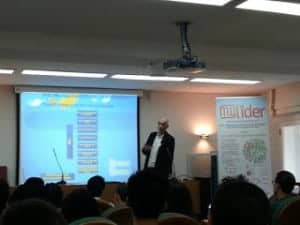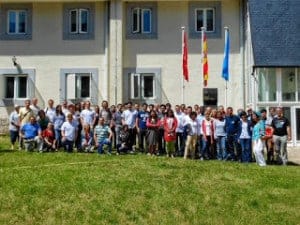Working in a big Institution of the European Union and managing and coordinating the creation of terminology in 24 languages needed to cooperate with four layers of partners: the some more than 10 other EU Institutions and more than 60 EU specialized agencies, the big international organizations like the UN and its agencies, the OECD or NATO, the Universities dealing with terminology and maintaining databases in their linguistic or IT departments of in specific disciplines like law, finance or medicine and last but not least big multinational companies needing terminology tools for their multilingual communication.
In such a multiple cooperation and communication, you encounter a real terminology big data space with thousands of databases and glossaries, in hundreds of languages, in hundreds of domains and disciplines. They have a different conception, a different taxonomy and semantic logic, they are developed in different formats and interconnected in different ways, in metasearch tools, via web-service or they are just isolated in some server or webpage and difficult to find or accessible only by a precise group of users.
And there is of course an enormous overlapping of research on the same concepts and terms and often in the same corpora. This is creating millions of duplicates with similar definitions and the same results.
If we calculate that the creation of complete entry in a multilingual database can take several hours and occupy several terminologists or translators and interpreters, you can imagine how many time is spent worldwide to compile these databases containing some millions of terms.
And most of this time is nowadays wasted.
And I say nowadays because we have now the possibility of linked data. There are several technical methods to interconnect these resources in one unique terminology cloud, cleaning the duplicates and giving to the user the one and only normative solution or at least the term chosen by the specialists in the respective domain.
Because, why should a translator in a European Institution waste time to create or update an entry of their database let`s say on an concept related to agriculture, when you have access to the terminology of FAO, the UN agency specialized in this domain.
There are several research and industrial projects in this direction. One of them is the Lider program of the EU supporting the Multilingual Linked Data. I had the honour to open recently the first SummerSchool, Datathon 2015, organized in the context of this program in Cerdedilla, in a research center of the Polytechnic University of Madrid, where linguists and engineers worked for one week on these objects, on how to link terminology data in one multilingual cloud covering all domains of institutional, academic and industrial activity.
In my keynote speech, I presented the modern methods and tools that the Terminology Coordination Unit of the DG Translation of the European Parliament is developing and applying in the management of Terminology and in the communication with all EU Institutions.
The needs of the multilingual globalized communication and cooperation have made totally change the trends of the terminology management. The keywords are now: share, connect, interrelate and make accessible all terminology data in all languages and in all domains integrating it also in the fast developing automated translation tools.
Written by Rodolfo Maslias, Terminology Coordination, European Parliament





